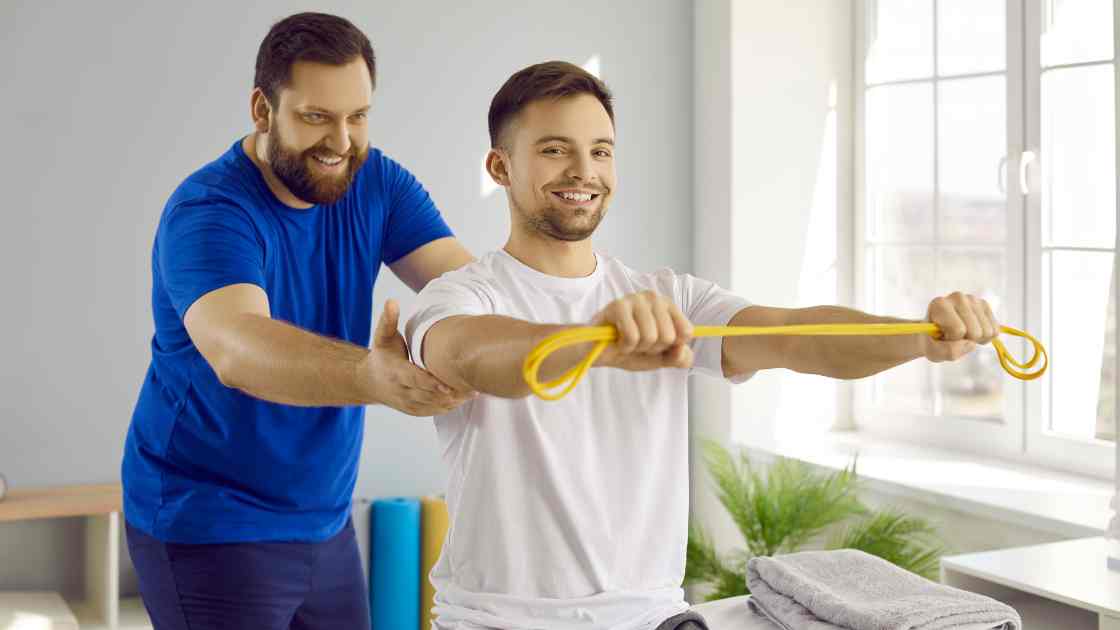Hernias occur when part of an internal organ, often the intestines, pushes through a weak spot in the surrounding muscle or tissue. They are commonly found in the abdomen and can cause discomfort, pain, and other complications. While surgery is often needed to repair the hernia, exercise plays an important role in the recovery process. However, knowing which exercises to include and which to avoid is essential to ensure safe recovery without aggravating the hernia.
In this blog, we’ll cover the best exercises for hernia recovery, what movements to avoid, and how exercise can help strengthen muscles and prevent recurrence. For a detailed guide on safe exercises, visit Best Exercises For Hernia Patients.
The Role of Exercise in Hernia Recovery
Exercise plays a crucial role in strengthening muscles, promoting circulation, and aiding in recovery after hernia surgery. Proper exercise helps support the abdominal wall and reduce the chances of recurrence, but it’s important to be cautious and avoid activities that place excessive pressure on the hernia site. Building strength around the weakened area without overloading it is key to a successful recovery.
Benefits of Exercise After Hernia Surgery:
- Strengthens the core muscles that support the hernia site.
- Improves circulation, promoting healing and reducing inflammation.
- Helps control weight, which can reduce pressure on the abdomen.
- Enhances flexibility and mobility, preventing stiffness and improving overall well-being.
What Exercises to Avoid During Hernia Recovery
While exercise is essential for recovery, certain activities can strain the hernia site and potentially cause more harm than good. Avoiding these high-risk exercises is critical to preventing injury or recurrence.
1. Heavy Lifting
Lifting heavy weights is one of the most dangerous activities during hernia recovery. The strain from lifting can increase intra-abdominal pressure, putting stress on the weakened area and potentially causing the hernia to reoccur. Avoid weightlifting exercises like deadlifts, squats, and overhead presses until fully healed.
2. Abdominal Exercises
Certain abdominal exercises, such as sit-ups, crunches, and leg raises, can put excessive pressure on the abdominal muscles. These exercises can worsen the hernia or delay healing. Instead, opt for gentle core-strengthening exercises that don’t directly engage the hernia site.
3. High-Impact Activities
High-impact exercises, such as running, jumping, and plyometric exercises, can jar the body and place stress on the abdominal wall. Avoid these activities, especially in the early stages of recovery, as they can exacerbate symptoms or cause further injury.
4. Intense Cardio Workouts
Activities like running, sprinting, or high-intensity interval training (HIIT) should be avoided during recovery. These exercises increase intra-abdominal pressure, which can worsen a hernia or cause discomfort. Instead, opt for low-impact cardiovascular exercises like walking or swimming.
Safe Exercises for Hernia Recovery
While it’s important to avoid certain activities, there are many safe exercises for hernia recovery that can aid in healing and prevent further complications. These exercises focus on strengthening muscles without putting strain on the hernia site.
1. Walking
Walking is one of the safest and most effective exercises during hernia recovery. It’s a low-impact cardiovascular exercise that promotes circulation, aids digestion, and supports overall health without putting pressure on the abdominal area. Start with short walks and gradually increase the distance as you recover.
2. Pelvic Tilts
Pelvic tilts are gentle movements that engage the core muscles without straining the abdomen. This exercise helps strengthen the lower back and pelvic region, offering additional support to the weakened area.
How to Perform Pelvic Tilts:
- Lie on your back with your knees bent and feet flat on the floor.
- Tighten your abdominal muscles and gently tilt your pelvis upward.
- Hold for a few seconds, then return to the starting position.
- Repeat 10-15 times.
Pelvic tilts are a great starting point for rebuilding core strength during recovery.
3. Glute Bridges
Glute bridges strengthen the core, glutes, and lower back without placing pressure on the abdominal muscles. This exercise can improve stability and support around the hernia site.
How to Perform Glute Bridges:
- Lie on your back with your knees bent and feet flat on the floor.
- Tighten your core and lift your hips toward the ceiling, creating a straight line from your shoulders to your knees.
- Hold the position for a few seconds, then lower your hips back to the ground.
- Repeat 10-15 times.
Glute bridges help build core strength safely during hernia recovery.
4. Gentle Stretching
Incorporating gentle stretching into your recovery routine can improve flexibility and reduce tension in the body. Stretching helps prevent stiffness and promotes better posture, both of which are important during recovery. Focus on stretches that target the hips, lower back, and legs while avoiding any movements that involve twisting or straining the abdomen.
5. Deep Breathing Exercises
Deep breathing exercises can help strengthen the diaphragm and support the healing process. Practicing deep breathing helps reduce tension in the abdominal area and promotes relaxation.
How to Practice Deep Breathing:
- Sit or lie in a comfortable position.
- Place one hand on your chest and the other on your abdomen.
- Inhale deeply through your nose, allowing your abdomen to expand.
- Exhale slowly through your mouth, allowing your abdomen to fall.
- Repeat for 5-10 minutes daily.
Deep breathing exercises help improve circulation and promote healing without putting strain on the abdominal muscles.
The Importance of Core Strength
Strengthening the core muscles is essential for long-term recovery and prevention of hernia recurrence. However, building core strength requires a cautious approach. Focus on exercises that strengthen the deep core muscles, such as the transverse abdominis and pelvic floor, without straining the abdominal area.
Safe Core Exercises Include:
- Pelvic tilts: Strengthens the lower back and core without engaging the rectus abdominis (six-pack muscles).
- Leg slides: Strengthens the core without putting pressure on the abdominal muscles.
- Wall sits: Engages the legs and core while offering support for the back and pelvis.
Modifying Exercises for Safety
If you’re eager to get back to your regular fitness routine, you may need to modify certain exercises to ensure they are safe during hernia recovery. Making small adjustments to exercises can allow you to continue working out without putting undue pressure on the affected area.
Tips for Modifying Exercises:
- Reduce weights: Use lighter weights with higher repetitions to avoid straining the abdomen.
- Focus on form: Proper form is crucial to prevent injury. Engage the core and maintain control throughout each movement.
- Avoid holding your breath: Practice controlled breathing during exercises to prevent increased intra-abdominal pressure.
By modifying exercises and focusing on low-impact activities, you can stay active while allowing your body to heal.
Listen to Your Body
During hernia recovery, it’s important to listen to your body and recognize when to rest. Overexertion can cause setbacks in recovery, so always start with gentle exercises and gradually increase intensity as your body heals.
Warning Signs to Watch For:
- Pain or discomfort at the hernia site
- Swelling or bulging in the abdomen
- Nausea or dizziness during exercise
If you experience any of these symptoms, stop exercising immediately and consult your healthcare provider.
Conclusion
Exercise plays a key role in exercises for hernia recovery, helping to strengthen muscles, promote healing, and prevent recurrence. By focusing on safe, low-impact activities like walking, pelvic tilts, and glute bridges, you can support your recovery without straining the hernia site. Avoid heavy lifting, high-impact activities, and abdominal exercises that can increase intra-abdominal pressure.
At Dr. Good Deed Clinic, located at Kankarbagh, Kailashpuri 24, 90 Feet Rd, near Netra Jyoti Hospital, Kankarbagh, Bihar 800020, we are committed to delivering top-notch healthcare services. Recognized as the best clinic in Patna, we specialize in treating neurological conditions, digestive disorders, and chronic illnesses such as diabetes. Our expert team at Dr. Good Deed Clinic in Patna offers a comprehensive range of services, including routine check-ups, vaccinations, pain management, and heart disease consultations. Experience personalized care and expert medical attention at Dr. Good Deed Clinic, where your health is our priority.
For more information, Contact us at 093105 57225.




